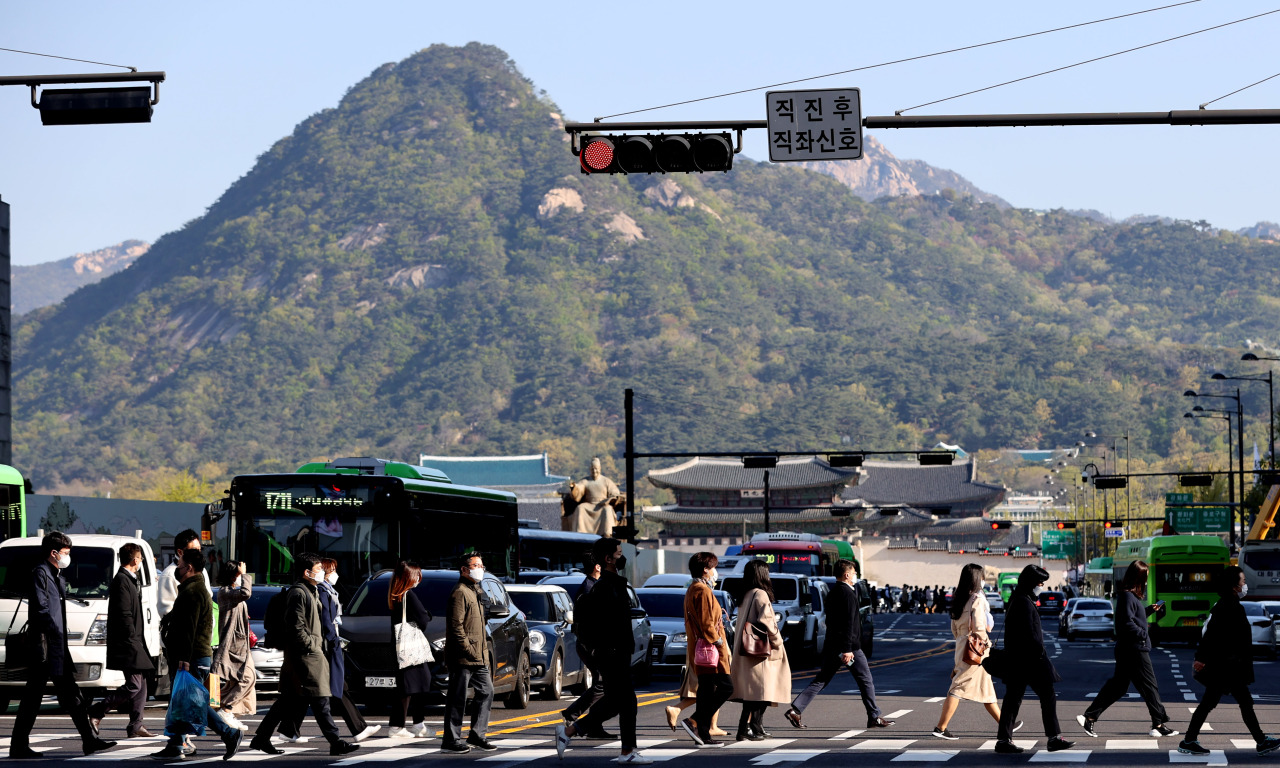 |
Pedestrians cross a street near Gwanghwamun Square in Seoul (Yonhap) |
South Korea’s domestic demand is on its track for a recovery in line with the rebound in exports and the adoption of the “Living with COVID-19” scheme, the Ministry of Economy and Finance said in its monthly report.
“The Korean economy is recovering amid an ongoing improvement in exports and the job market,” the ministry said in a monthly report.
“Domestic demand is likely to gradually rebound as the in-person service sector recovers due to eased quarantine rules,” the report showed.
But the ministry noted global risks including the growing inflation concerns surrounding spikes in raw materials and oil prices and the ongoing global supply bottleneck. Such risks could hinder the recovery of Korea’s economy, the ministry hinted.
“While pursuing the recovery toward normalization coupled with a rebound in domestic spending and measures to improve daily lives without delay, we will make our best efforts in managing the risks tied to inflation and supply of key raw materials,” the ministry said.
Several indexes suffered in terms of on-quarter growth in the July-September period, due to the fourth wave of COVID-19, which has seen the daily infection tally in quadruple digits since July 7. However, on-year indexes indicated a recovery in private spending and domestic demand.
Credit card spending here gained 13.4 percent on-year last month, marking the ninth consecutive month of growth, according to the ministry.
Sales at department stores grew 15.1 percent on-year, while sales at e-commerce platforms and online shopping grew 24.5 percent in the cited period.
The nation’s consumer sentiment index gained 3 points on-month to 106.8. A reading above 100 means optimists outnumber pessimists.
Amid the heated real estate market, the nation’s average housing prices gained 0.92 percent on-month as of September. Housing prices in Seoul and nearby areas gained 1.24 percent in the cited period. But transactions of residential properties declined 8.3 percent on-month and 0.4 percent on-year to 81,631 deals, reflecting the nation’s lack of supply in properties as prices continue to spike. On top of that, banks here have been temporarily suspending mortgage lending and adopting stricter screening rules for loans since July.
Korean employers hired 652,000 more on-year in October, with the total number of working people coming at 27.7 million. Meanwhile, the unemployment rate dropped 0.9 percentage point to 2.8 percent in the same period.
Asia’s fourth-largest economy’s consumer prices gained 3.2 percent on-year in October, the sharpest rise since January 2012, when the corresponding figure stood at 3.3 percent.
Bank of Korea Gov. Lee Ju-yeol said Thursday that Korea is likely to see faster-than-expected inflation for time being due to the global supply bottleneck and surging energy prices. Global supply chains have failed to keep pace with the fast-recovering demand from major economies, driven by smooth vaccine supplies, the BOK chief explained.
The BOK in August forecast an annual inflation rate of 2.1 percent, but Lee recently said consumer prices are likely to exceed the August projections. The central bank forecast in May that Korea’s economy would grow 4 percent this year, while the government projected 4.2 percent growth.
By Jung Min-kyung (
mkjung@heraldcorp.com)








